Click on images to enlarge
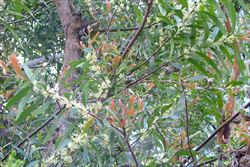
habit (Photo: Sheldon Navie)
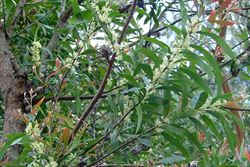
habit (Photo: Sheldon Navie)
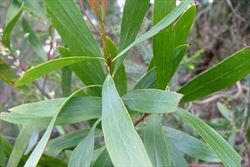
leaves (Photo: Sheldon Navie)
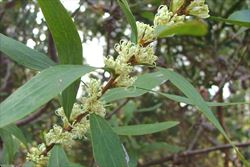
flower clusters (Photo: Sheldon Navie)
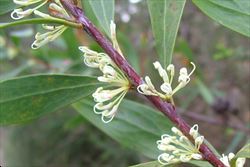
stem and flowers (Photo: Sheldon Navie)

close-up of flowers (Photo: Sheldon Navie)

mature fruit (Photo: Sheldon Navie)
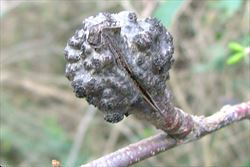
close-up of mature fruit (Photo: Sheldon Navie)
Scientific Name
Hakea salicifolia (Vent.) B.L. Burtt subsp. salicifolia
Synonyms
Banksia saligna (Andrews) J. Parm.Conchium salignum (Andrews) Sm.Embothrium salignum AndrewsHakea saligna (Andrews) Knight
Family
Proteaceae
Common Names
finger hakea, willow hakea, willow leaf hakea, willow-leaf hakea, willow-leaved hakea
Origin
Native to parts of eastern Australia (i.e. south-eastern Queensland and eastern New South Wales). It is widespread in eastern New South Wales from the Queensland/New South Wales border south to Jervis Bay, and also extends northwards to Springbrook in south-eastern Queensland.
Naturalised Distribution
Naturalised in south-eastern Australia (i.e. in southern Victoria and south-eastern South Australia).
Also naturalised on Norfolk Island and overseas in New Zealand, southern Europe and South Africa.
Notes
Willow-leaved hakea (Hakea salicifolia subsp. salicifolia) is currently only regarded as an environmental weed in Victoria, though it is also naturalised in the Adelaide Hills in South Australia. This species has spread from cultivation as a garden ornamental and, like other hakeas, it regenerates prolifically after fires. Infestations replace indigenous vegetation and prevent the regeneration of locally native species.
Willow-leaved hakea (Hakea salicifolia subsp. salicifolia) became naturalised in the Melbourne area in Victoria as early as the 1880s. It is now a common environmental weed in many parts of southern Victoria and appears on numerous local environmental weed lists in this region (e.g. in Monash City, Knox City, Banyule City, Nillumbik Shire, Yarra Ranges Shire, Cardinia Shire and on the Mornington Peninsula).
This species is also regarded as being invasive in New Zealand, where it has spread into conservation areas (e.g. Abel Tasman National Park). However, being an early successional species, it may eventually be replaced by natives if no further disturbance events (i.e. fires) occur in invaded areas.

